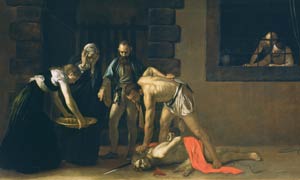sing the Tragically Hip.
The unfolding tragedy of New Orleans after Hurricane Katrina is one of human and personal loss, but begins to look more and more as if it will be a deep cultural loss. This city so rich in music, life, people.
- 'I'm just glad I saw it' New Orleans was the city of jazz, Faulkner and Tennessee Williams, the place where the US Bible Belt came unbuckled. Former New York Times editor Howell Raines laments the destruction of the Big Easy, and asks: why did President Bush do so little in response? Impassioned article in today's Guardian: http://www.guardian.co.uk/g2/story/0,,1560139,00.html
- Profile of New Orleans, before Katrina (Boston Globe): http://tinyurl.com/7o86d
- New Orleans in film:
- New Orleans in music: Louisiana Music Trail (http://www.crt.state.la.us/crt/tourism/music/musictr.htm);
- Photography: New Orleans photographs by Louis Sahuc (http://www.photoworksneworleans.com/);
Blue notes
Jazz defines the magic of New Orleans, says Dave Gelly: September 04 2005, The Observer
'A bunch of us kids, playing, would suddenly hear sounds, but we wouldn't be sure where they were coming from. So we'd start trotting, start running - 'It's this way! It's that way!" The music could come on you any time like that. The city was full of the sounds of music.'
Guitarist Danny Barker, born in New Orleans in 1909, reminiscing half a century later.
Nostalgia may not be the best guide to the way things were, but until disaster overwhelmed it last week, New Orleans was indeed a unique and magical place. Tennessee Williams, in the opening stage direction of A Streetcar Named Desire, invokes the strange light at dusk, 'which invests the scene with a kind of lyricism and gracefully attenuates the atmosphere of decay'. To this he adds the sound of a 'blue piano' which 'expresses the spirit of the life which goes on here'. And it was music that made New Orleans famous. Historians now argue about whether it really was the sole birthplace of jazz, but from King Oliver to Wynton Marsalis the city certainly gave birth to a glorious lineage of musicians. They moved on to advance their careers, but when the subject of their native city came up most of them could talk all night, evoking a kind of lost paradise, where music was as ubiquitous as the humid air, smothering poverty, violence and squalor in its sweet, moist embrace.
No matter what age they are, New Orleans-born musicians always seem able to play together like brothers, which is remarkable in a form of music obsessed with categories and styles. Some years ago, on a steamy July afternoon in the Market area of the city, I caught the sound of a band in full cry. The dancing, clapping crowd was so thick that I could not see them at first, until the crowd parted and I caught a fleeting glimpse of the trumpet player. It may have had something to do with the way he was standing or holding the instrument, but for a moment I could have sworn I was looking at the young Louis Armstrong. He was in his late twenties, his name was Leroy Jones and his fellow musicians were old enough to be his grandparents.
One thread binding the generations is the irresistible New Orleans beat, a rolling two-in-a-bar with a touch of Caribbean syncopation. You could stroll down Bourbon Street any night of the year and the very sidewalk seemed to be moving to it. You hear it in the music of Jelly Roll Morton (born 1890), of Fats Domino (1928) and of Nicholas Payton (1973).
This whole tradition is based on informal music-making, much of it in the open air, and in recent times that has depended on the tourist trade. Musical skills have been passed down by a kind of casual, on-the-job apprenticeship, which means having jobs, which means having audiences. Will it survive? Touch and go, I'd say. But the physical remains - the run-down corner shop which was once a famous saloon, the few rickety sheds which are all that survive of Storyville, the red-light district where the boy Armstrong used to deliver coal - they've gone for good.




















